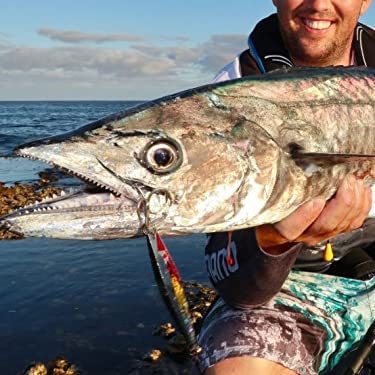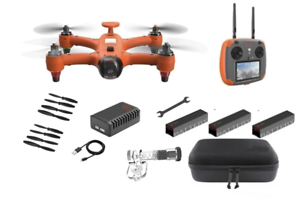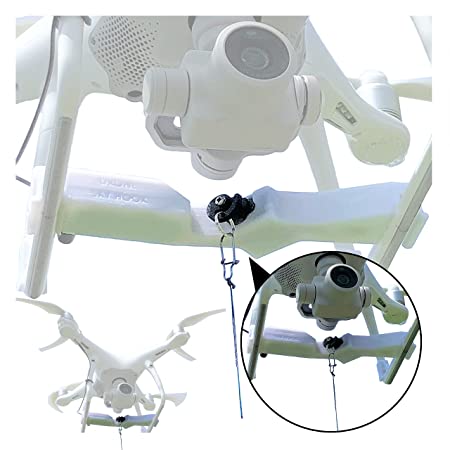
It is important to know the rules and regulations when you use a drone for fishing. There are instructional videos showing you how to fly your drone to catch fish. You can also read our article about drone ethics. We will be covering some ethical concerns surrounding the use of drones to fish. Check out our guide for drone fishing gear.
Regulations applicable to drone fishing
It is possible to wonder what regulations apply when you are watching a YouTube video of a drone fishing for fish. Although there are many reasons you should follow local laws in your area, safety is the main concern. To protect both your life and that of the fish, you must follow the correct laws. We'll be discussing the most important regulations in this article and how to ensure that you are following them. Also, don't forget about the International Game Fish Association Rules.
Drones cannot be operated over public places, including sporting events or stadiums. They can't carry weapons or stay within a half-mile of sporting events. Drone operators must also be able to view their aerial equipment at any time. Additionally, drones are not allowed to fly above people, stadiums, and critical infrastructure. So, if you're unsure of what the rules are for using a drone to fish, check with your local law enforcement agency and consult with an attorney.

While most states have passed drone laws, there are still some states that have not. Illinois recently passed SB2167. The bill prohibits the use of drones in state parks without permission. It also defines privacy rights and sets out the rules that drone operators must follow for both recreational and commercial purposes. Finally, it prohibits drones from interfering with hunters and other wildlife. These new laws are expected be finalized within a few years.
Drone fishing: Ethical concerns
Drone fishing is not without controversy. Companies sell underwater drones that can fish for fish. These drones can be used to fish for fish. The process of fishing is often captured on video. However, the process of getting a fish out from the water is quite different. People who are concerned about the ethics of this type fishing may prefer to find entertainment elsewhere.
While there are obvious advantages to using drones for fishing, some have argued that they may be cheating the fishing population. While fishing has not changed much over millennia, using a drone to catch a fish may change that and diminish the thrill of the chase. The use of drones can also pose a problem for conservation. Here are some ethical issues to be aware of before you purchase a drone for fish-catching.

Drone fishing is not the best choice. Drone fishing could be dangerous to the environment and can overfish endangered species. While some states permit drones for recreational fishing, others prohibit it. Drone fishing is not without its limitations. The drones you buy might not be as capable of controlling the range, GPS functionality, lifting power, or control range that you need. In addition, drone fishing can lead loss of fish if lines get tangled. Third, piloting can pose problems.
FAQ
How can I keep drones away?
Drones are increasingly popular for home surveillance. However, they pose a threat to privacy and security. To avoid drone attacks, install motion sensors around the property. They will detect any unapproved flying objects.
Are drones allowed on public events?
If you observe the rules, then you can fly a drone wherever you want. However, if you plan to fly your drone during a public event such as a parade, festival, or concert, you will need approval from the event organizers.
What's the difference between quadcopters and hexacopters?
A quadcopter is a four-rotor helicopter that flies like a traditional helicopter. It has four rotors which rotate independently. The quadcopter's quadcopter counterpart, the hexacopter, has six instead of four. Hexacopters offer more maneuverability and stability than quadcopters.
What drone is the best for beginners?
The DJI Phantom 2 Vision+ drone is a popular choice for beginners. This model comes equipped with a 4K camera, which allows you to take high-quality aerial photos and videos. This drone is easy to navigate thanks to its GPS system.
Statistics
- According to the multiple listing service (MLS), houses and apartments with drone photographs are up to 68 percent more likely to sell than those without pictures. (thedroneu.com)
- Research and Markets predict a growth rate of 51.1% over the next five years. (thedroneu.com)
- According to ZipRecruiter, the minimum hourly wage of drone pilots is $20. (thedroneu.com)
External Links
How To
How to Fly Drones with Beginners
A drone is an unmanned aerial vehicle that can be remotely controlled and used for surveillance, aerial photography, film production, research, and other hobby purposes. Drone technology has existed since World War II. However, commercial use began in 2010 when DJI released their Phantom series of quadcopters. Since then, there have been many different types of drones available, from beginner-friendly models like the Parrot AR Drone 2.0 to professional-grade multi-rotor craft like the DJI Mavic Pro.
You can fly a drone in many different ways, including:
-
Remote control - This allows you to control the drone from your hand. There are two main types for controllers: Joysticks or On/Off switches, which can be used to control the drone's flight path.
-
Manual Control – This allows remote operation of the drone via GPS coordinates using a smartphone application. The app will provide instructions and help you to locate the drone.
-
Autonomous Flight – This is when the drone handles all the piloting tasks. It's basically flying autonomously without any human intervention. The drone must be equipped with a camera and sensors that can capture images and data in order to fly autonomously.
-
Triggered Flying - This method works in the same way as manual control. However, the pilot has to manually set up a route for the drone and it follows that route until reaching the endpoint. After the preprogrammed route is complete, the drone will automatically land and return to its base.
-
Landing Gear – Some drones are equipped with landing gear, which allows them to safely land if they lose power during flight.
-
Goggles-Some pilots use goggles to protect their eyes from debris during operations.
-
Camera - Certain drones come with cameras that allow you to take photos and videos from high above.
-
Obstacles – Some drones have obstacle avoidance systems that stop them from colliding with obstacles.
-
Speed - Some drones can reach speeds of over 40 mph.
-
Battery Life: Most drones have a battery life of between 20 and 30 minutes depending on how many power sources you use.
-
Range - Some drones can travel upto 30 miles depending on their models.
-
Power source - Not all drones can use an external power source. Others can run on internal batteries.
-
Weight - Some drones are lighter than others, while some models can weigh as much as 4 pounds.
-
Size - Drones can range in size from tiny devices that can fit in your palm to heavy crafts that weigh 50 pounds.
-
Price - High-end drones can go for thousands of dollars, while low-cost models start at $100.